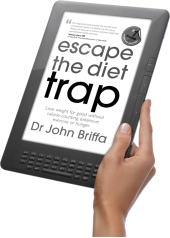Cardiovascular diseases (such as heart disease and cerebrovascular disease which can give rise to heart attack and stroke respectively) represent the most common cause of death in Western countries. Not surprisingly, health agencies and the medical profession focus on them a lot. In recent years, there has been a vogue for assessing cardiovascular disease risk in individual patients so that, supposedly, those at greatest risk can be advised and treated appropriately.
There exists a range of ‘tools’ which doctors and others can use to help determine likely risk. These involve plugging in measurements such as cholesterol levels, blood pressure, age, sex into an algorithm-based calculator. The calculator spits out a ‘risk’ which can then be used as the basis for advice given to the individual. My experience in practice is that many patients like these assessments, and so do many doctors. They have, on the surface, a sheen of being able to quite-accurately predict whether someone is likely to be struck down with a heart attack or stroke over the next five or 10 years, say.
But how reliable are these calculators in reality?
Recently, the journal Circulation published a study in which 25 cardiovascular disease risk calculators were compared with each other. Hypothetical patients were created using variations of the following parameters: age, gender, smoking, blood pressure, high-density lipoprotein, total cholesterol and diabetes. The data was plugged into the calculators, and the risks generated were categorised as either ‘low’, ‘medium’ or ‘high’. In the ideal world, the calculators would be accurate and consistent, which each hypothetical patient falling into just one category (i.e. either ‘low’, ‘medium’ or ‘high’) whichever tool was used to assess risk.
However, it turned out that there was in fact a lot of variance in the results obtained from the calculators. The average number of categories generated for each patient was not 1, but 2.2. That means, in effect, that patients ended up being categorised in both, say, ‘low’ and ‘medium’ or ‘medium’ and ‘high’ risk groups. Also, 41 per cent of hypothetical patients ended up being categorised in all three risk groups (‘low’, ‘medium’ and ‘high’).
In non-diabetics, on average, the highest calculated risk was about five times higher than that of the lowest calculated risk.
In other words, overall, the results were highly inconsistent. This, obviously, does not inspire confidence.
In an accompanying commentary [2], the authors admit the deficiencies of current calculators (they describe their predictive value as “modest”) and attempt to give reasons for why there is such variance between tools. They also make the point that such tools are better than calculations based on “semi-arbitrary thresholds of blood pressure and lipid levels as proxies for high [cardiovascular disease] risk”. They go on to add: “Following this traditional approach, patients with identical ‘raised’ blood pressure or lipid levels could be recommended identical treatments, despite more than ten-fold differences in their absolute [cardiovascular disease] risks,” citing this study [3] to support this statement.
It seems to me that our attempts to categorise risk based on conventional tests is flawed and potentially misleading. If a range of measurements taken together is not reliable, what hope is there for single measurements to accurately predict risk?
My experience in practice is that many individuals will be labelled as ‘high risk’ on the basis of nothing more than their cholesterol level. However, a study published in 2009 found that almost three-quarters of individuals admitted to hospital because of heart disease had LDL-cholesterol levels that would be regarded as acceptable or even low [4].
This caused some to call for cholesterol targets to be brought down even further. Another interpretation might be this: LDL-cholesterol is not a particularly important factor in heart disease and therefore not a good predictor for the condition either.
I know which camp I’m in.
References:
1. Allan GM, et al. Agreement among Cardiovascular Disease Risk Calculators. Circulation Published online before print 10 April 2013
2. Jackson R, et al. Vascular Risk Calculators: Essential but Flawed Clinical Tools? Circulation. published online 11 April 2013
3. Jackson R, et al. Treatment with drugs to lower blood pressure and blood cholesterol based on an individual’s absolute cardiovascular risk.
Lancet. 2005;365:434-441.
4. Sachdeva A, et al. Lipid levels in patients hospitalized with coronary artery disease: an analysis of 136,905 hospitalizations in Get With The Guidelines. Am Heart J. 2009;157(1):111-117.[hr]
[box style=”rounded” border=”full”]
Dr John Briffa’s best-selling ESCAPE THE DIET TRAP – lose weight without calorie-counting, extensive exercise or hunger is available in the UK and US
“This magnificent book provides the scientific basis and practical solutions to liberate you from yo-yo dieting and allow you to achieve sustained weight loss and enhanced health with ease.”
William Davis MD – #1 New York Times bestselling author of Wheat Belly
To read some of the dozens of 5-star reviews for this book [button link=”http://www.drbriffa.com/amazon-reviews-for-escape-the-diet-trap/” color=”silver” text=”dark” window=”yes”]click here[/button]
To buy a paperback copy of the book from amazon.co.uk [button link=”http://www.amazon.co.uk/Escape-Diet-Trap-John-Briffa/dp/0007447760/ref=tmm_pap_title_0?ie=UTF8&qid=1324815918&sr=1-1″ color=”orange” window=”yes”]click here[/button]
To buy a kindle version of the book from amazon.co.uk [button link=”http://www.amazon.co.uk/Escape-the-Diet-Trap-ebook/dp/B005ODY0RW/ref=tmm_kin_title_0?ie=UTF8&qid=1324815918&sr=1-1″ color=”orange” window=”yes”]click here[/button]

To buy a print copy of the book from amazon.com [button link=”http://www.amazon.com/Escape-Diet-Trap-calorie-counting-extensive/dp/0957581602/” color=”orange” window=”yes”]click here[/button]

To buy the kindle version of the book from amazon.com [button link=”http://www.amazon.com/dp/B00BLQ40QM” color=”orange” window=”yes”]click here[/button]
[/box]